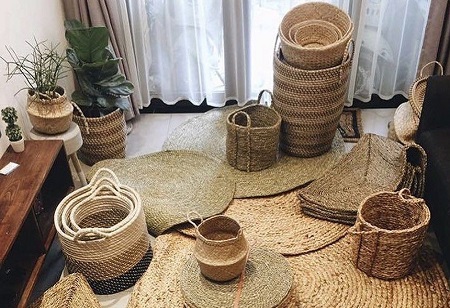Leveraged in diverse sectors in non-woven forms such as geo-textiles and agro-textiles & in the fabric industry & handicrafts,
jute – popularly known as the
golden fiber plays a significant role in the aforementioned segments due to its huge potential to propel the economy. It is a very useful, versatile & economical fiber as well. Jute-based factories cater to the domestic & international markets owing to their huge export potential.
While the global jute bags market is anticipated to reach USD 1.9 billion by 2032, the overall sales in the global jute bags market are anticipated to expand by 1.6 times during the forecast period and the expansion of the food & retail segment is predicted to bolster the sales of
jute bags. For packaging food commodities like cashew nuts, coffee beans, etc. hessian bags gunny bags & jute bags are used on a larger scale as packaging alternatives to plastic woven sacks.
The surge in demand for jute in the fashion industry
The Developed economies have implemented various standards of their own in order to protect their environment & hence have introduced environmental as well as social certification standards. Growing public awareness of the environmental impact of products has led to the rise of eco-labeling.
Moreover, the surge in demand for jute in the fashion industry is owing to the availability of a wide range of stylish handbags that come in several designs & colors. Therefore, this golden fiber as an eco-friendly material is gaining traction in the fashion industry, which is making it a viable alternative to other bags. Also, the thirty-one to fifty kg capacity segment is anticipated to rise by 240 BPS over the forecast period amidst the proliferating usage of jute bags in agricultural products & the application of jute bags with a capacity of thirty-one to fifty kilograms will give birth to lucrative opportunities for the market.
A renewable alternative for conventional shopping bags
Household end-use is gaining traction among several consumers around the world due to the usage of jute bags not only as a renewable alternative for conventional shopping bags but also as a luxury packaging format. Owing to the cost-effectiveness & increasing usage in the
textiles & homewares segment there is a huge surge in demand for jute bags. Increasing sustainability concerns about the use of plastic & the approach taken by the government towards the health eco-system are bolstering the market growth.
One such company that is into the manufacturing and exporting of premium quality jute products like jute ropes, jute yarns, and other custom-made products is Bangalore Fort Farms Limited.
Increasing adoption of jute in the agricultural sector
Jute bags & shopping bags manufacturers are eyeing developing markets like India since the adoption of jute is surging in the agriculture & fashion industries. Apart from this, key players in developed economies are introducing new products since the usage of plastic bags is banned. Also, the benefits rendered by jute bags like biodegradability, low cost, & high strength have led to the expansion of the jute bags market.
Recyclable & inexpensive
The first & foremost important advantage of using jute bags is they are recyclable & not expensive. While bulk materials & retail goods are stored in jute bags, the inclination toward jute bag facilities & environmental consciousness has enhanced the appeal of the jute bags market.
Sack bags, Jute shopping bags, as well as hessian bags, are gaining immense popularity among customers since these are built of materials that are easy to recycle, cost-efficient, & recyclable. This lets the producers expand the scope of their products. The fabric texture of jute bags helps it in preventing damage to the packaged product, and hence it is largely used in commercial segments.
Cheviot Company Limited produces jute products & fabrics with the flexibility to cater to the requirements of both domestic & international clients.
India – the most lucrative jute bags market
In 2021, the production of jute goods was about 756 (000’ MT). This includes hessian & sacking bags, as per the Office of the Jute Commissioner (Ministry of Textiles Govt. of India).
The value of exports of jute goods was One hundred and nine million US dollars from India for total hessian during 2020-2021. And, for total sacking goods, it was fifty-nine million US dollars.
The road ahead
The jute bags market in India is anticipated to reach a tailwind, accounting for over forty-eight percent in South Asia throughout the forecast period and as per FMI, the jute bags industry in the country will see an incremental opportunity of 148 million US$ by 2032.
It is predicted that the key end-use segment for the jute bags industry is the retail segment & it is set to account for forty-six percent of the jute bags market. In the global jute bags market, the retail segment is going to account for a lion’s share, according to a recent study.
While the big players in the jute bags sector are expanding their global presence, diversifying their product offerings, & augmenting their development processes with an aim to gain a competitive edge, a few others are adopting strategies like mergers & acquisitions for strengthening their position in the market.
